Statement on Monetary Policy – February 2018 Box B: The Recent Economic Performance of the States
Over the past decade, large movements in commodity prices and mining investment have driven significant variations in economic outcomes across the states. More recently, the economic performance of the states has tended to converge, as conditions in the parts of the economy that were previously dragging on activity have improved (Graph B1).[1] This has supported the improvement in economic conditions nationally. In Western Australia, state final demand – a measure of domestic demand excluding trade – is no longer declining, and demand growth has picked up in Queensland, South Australia and Tasmania. Conditions in New South Wales and Victoria also remain favourable. Labour market outcomes improved across all states over 2017, with most experiencing strong growth in employment over the year.
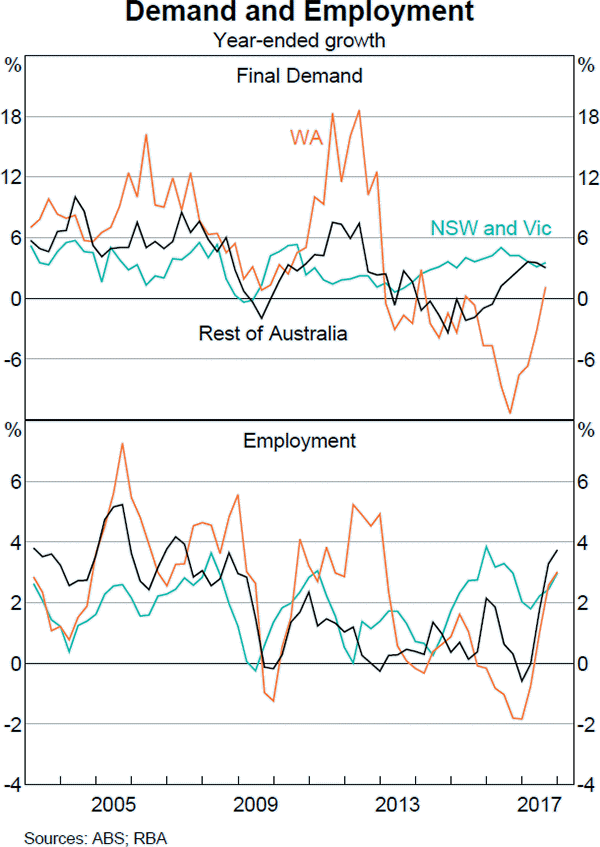
The decline in variation in economic conditions across states is partially explained by investment cycles (Graph B2). In the resource-rich states, the drag from declining mining investment has eased. This was evident first in Queensland and more recently in Western Australia, but some further drag is expected in Western Australia as the major liquefied natural gas projects are completed. The related increase in output (and exports) from earlier mining investment and the increase in commodity prices over the past year or so have also helped support business activity and reduce the variability in conditions between the states more generally.
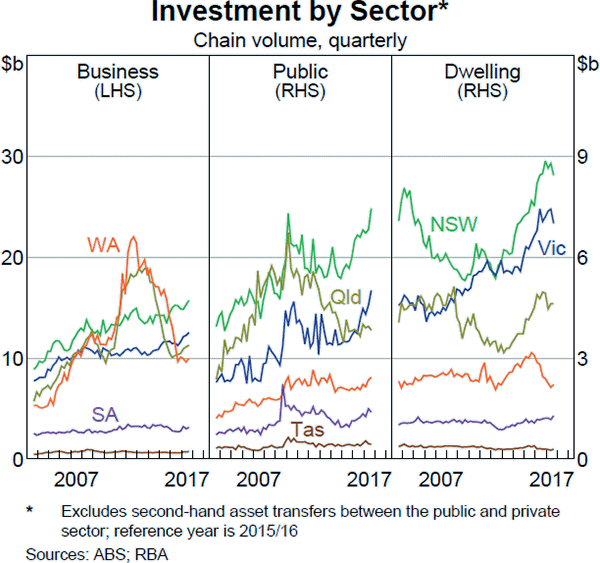
Differences in state dwelling investment cycles have also narrowed, and are therefore no longer contributing to variation in demand growth across states. Over the past year, dwelling investment in Queensland, New South Wales and Victoria has been relatively stable following a period of strong growth. This has narrowed the differences in growth rates of overall demand across the states, even though dwelling investment continued to decline in Western Australia. At the same time, the convergence has been supported by stronger non-mining business investment and public demand growth in most states. These trends contributed to growth in state final demand remaining relatively steady in Victoria and New South Wales, and brought growth in Queensland, South Australia and Tasmania up to a similar pace. A large pipeline of public infrastructure projects is expected to continue to contribute to growth and support business activity over the coming few years, particularly in New South Wales and Victoria.
Some convergence in conditions has also been evident in the key labour market data in most states. As the negative spillovers from lower levels of mining investment have started to ease, employment growth turned positive in Western Australia and Queensland in 2017. It picked up in New South Wales, South Australia and Tasmania, while the steady strong growth in employment that has occurred in Victoria for a number of years continued.
By industry, health care has been a major contributor to employment growth over recent years, and this became more widespread across states in 2017 (Graph B3). The higher level of dwelling investment and public infrastructure spending in the eastern states has also been reflected in stronger employment in construction and certain business services, such as professional, scientific & technical services.
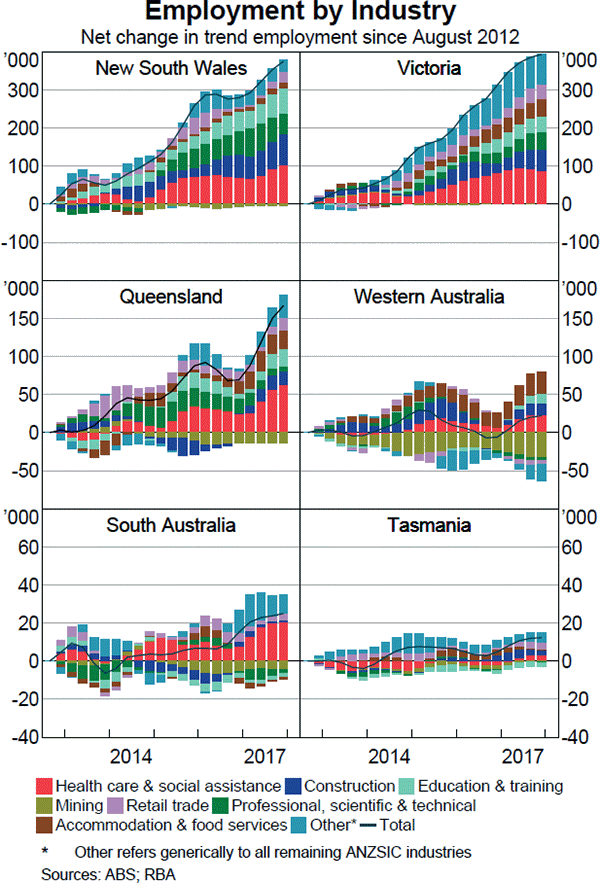
The strong growth in employment has occurred alongside large increases in labour force participation rates in most states over 2017 (Graph B4). The increase in participation rates was particularly pronounced in Victoria, and in Queensland and Western Australia, where the increases largely unwound the falls in participation rates in those two states seen through 2016. Over 2017, the unemployment rate in most states edged lower; a number of states recorded their lowest unemployment rates in several years at the end of 2017 (Graph B5). The main exceptions were Victoria and Western Australia. In Victoria, above-average population growth and an elevated participation rate appear to be muting the impact that employment growth would otherwise have on the state's unemployment rate.
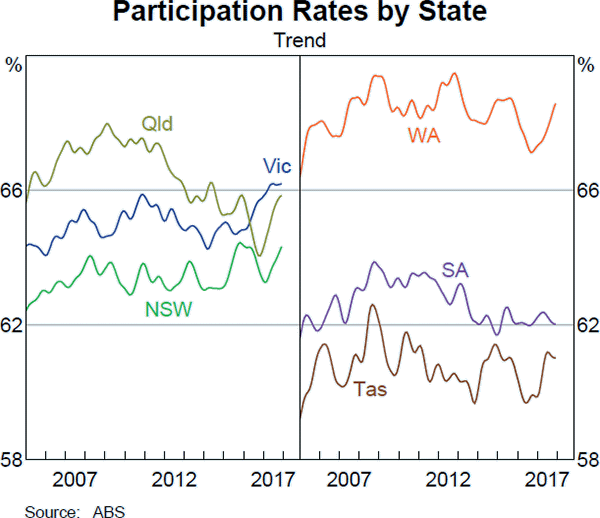
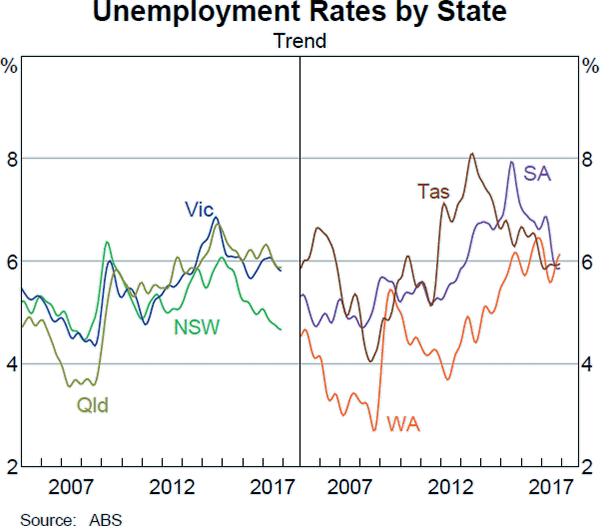
Despite the improvement in employment growth across the country during most of 2017, wage growth remained quite subdued in all states. Growth in household disposable income per capita also remained modest in most states, and was negative in Western Australia. The slower growth in household incomes has weighed on spending by households. Household consumption per capita grew at a below-average pace in all states for much of 2017, most notably in Western Australia and Tasmania (Graph B6). Consumption per capita grew faster than disposable incomes leading to lower household saving rates in most states over 2016/17.
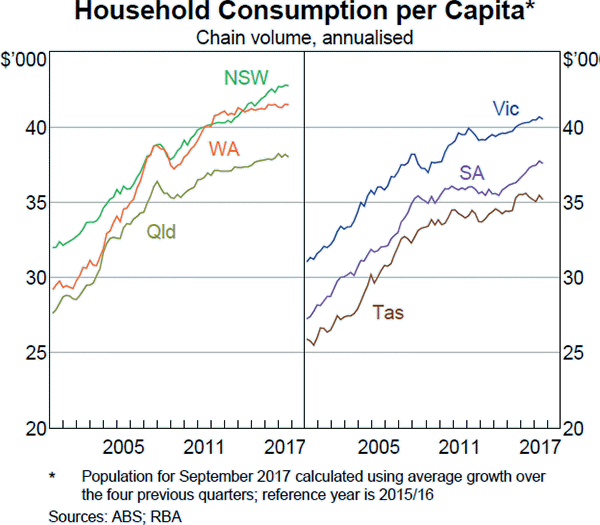
Above-average population growth in Victoria and New South Wales has been reflected in stronger growth in total household consumption spending in those two states.
Footnote
See Carr T, Fernandes K and T Rosewall (2017), ‘The Recent Economic Performance of the States’, RBA Bulletin, March, pp 1–12 [1]